 W
WBrachytarsomys mahajambaensis is an extinct rodent from northwestern Madagascar. It is known from nine isolated molars found in several sites during fieldwork that started in 2001. First described in 2010, it is placed in the genus Brachytarsomys together with two larger living species, which may differ in some details of molar morphology. The presence of B. mahajambaensis, a rare element in the local rodent fauna, suggests that the region was previously more humid.
 W
WThe bulldog rat is an extinct species of rat endemic to Christmas Island in the Indian Ocean. It was one of two rats endemic to Christmas Island, alongside Maclear's rat.
 W
WCanariomys is an extinct genus of rodents that once existed on the islands of Tenerife and Gran Canaria, part of the Canary Islands, Spain. These giant rats could reach a weight of about 1 kg (2.2 lb). They were herbivores; their diet was based on plant materials, probably soft vegetables such as roots, ferns, and berries, but not grass. C.tamarani were considered herbivores, eating everything plant like except grass with good digging skills. While C.bravoi were considered as a rat character, because of its large size, with an omnivorous diet with good climbing skills.
 W
WCoryphomys is an extinct genus of rats, known from sub-fossils found on Timor. Its name is Greek for "top-of-the-head mouse" or "summit mouse".
 W
WGould's mouse lived in eastern inland Australia, and was named after John Gould. It was slightly smaller than a black rat, and quite social, living in small family groups that sheltered by day in a nest of soft, dry grass in a burrow. It usually dug burrows at a depth of 15 cm under bushes. Gould's mouse was common and widespread before European settlement, but disappeared rapidly after the 1840s, perhaps being exterminated by cats. Alternatively, it may have been out-competed by the introduced rats and mice, succumbed to introduced diseases or been affected by grazing stock and changed fire regimes. Despite extensive survey work in its known range, the last specimens were collected in 1856–57, and it is presumed to be extinct.
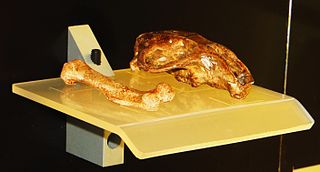 W
WThe Gran Canaria giant rat is an extinct species of rat endemic to the island of Gran Canaria.
 W
WHypogeomys australis is an extinct rodent from central and southeastern Madagascar. First described in 1903, it is larger than its close relative, the living Hypogeomys antimena, which occurs further west, but otherwise similar. Average length of the femur is 72.1 mm, compared to 63.8 mm in H. antimena. One of the few extinct rodents of Madagascar, it survived to at least around 1536 BP based on radiocarbon dating. Little is known of its ecology, but it may have lived in burrows like its living relative and eaten some arid-adapted plants.
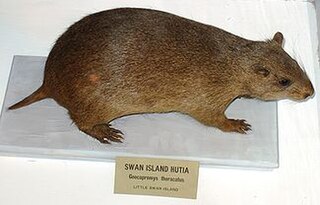 W
WThe Little Swan Island hutia is an extinct species of rodent that lived on the Little Swan Island, off northeastern Honduras in the Caribbean. It was a slow-moving, guinea-pig-like rodent and probably emerged from caves and limestone crevices to forage on bark, small twigs and leaves.
 W
WThe long-tailed hopping mouse is an extinct species of rodent in the family Muridae. It was found only in Australia. It is known from a handful of specimens, the last of which was collected in 1901 or possibly 1902. It is presumed to have become extinct within a few decades from then – possibly several decades in view of a skull fragment found in an owl pellet in 1977. The cause of extinction is unknown, but may be a variety of factors including predation and habitat alteration. Little is known of its biology other than that it dug burrows in stiff clay soils. It was less a pest to humans than other hopping mice, although it would eat raisins. The mouse was mainly gray in colour with small pink ears and big eyes with a long hairy pink tail about two inches longer than its own body. It was first described by John Gould on the basis of specimens sent to him from Australia.
 W
WMaclear's rat is an extinct large rat endemic to Christmas Island in the Indian Ocean. It was one of two species of rat native to Christmas Island, alongside the Bulldog rat. Abundant, unfamiliar with and seemingly unafraid of humans, large numbers of the creatures emerged and foraged in all directions at night. Making querulous squeaks, the rats entered the Challenger Expedition's tents and shelters in 1886, ran over sleepers, and upset everything in the search and fight for food. Maclear's rat might have been responsible for keeping the population of the Christmas Island red crab in check, as recent numbers of the crab are greater than in the past. It is thought that black rats inadvertently introduced by the expedition infected the Maclear's rats with a disease, which in turn could have contributed to the species decline. The last recorded sighting was in 1903, although it is possible that Maclear's rats formed hybrids with black rats. A hard tick, Ixodes nitens, described as an ectoparasite of Maclear's rat is also thought to be extinct.
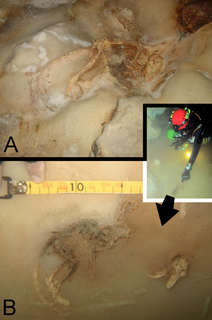 W
WThe Majorcan giant dormouse is an extinct animal from the Balearic Islands of Majorca and Mallorca, Spain. It is considered an example of island gigantism. The closest extant relative is considered to be the genus Eliomys, which includes the garden dormouse, which was confirmed by a mitochondrial DNA analysis in 2020. It is believed to have been omnivorous, with a generalist diet and with an ability to eat hard foods. Its limb bones are robust and dissimilar in morphology to extant Gliridae, suggesting an unusual form of locomotion, with the proportions being closest to that of the Gran Canaria giant rat. It may have been terrestrial rather than arboreal, and it has been suggested that it had fossorial capabilities. The arrival of humans on the island is believed to have been a major factor in its extinction. H. morpheus was described by the palaeontologist Dorothea Bate in 1919. A 2011 study estimated its body weight as between 173 and 284 g, with a head and body length of 179 mm and a total body length of 295 mm.
 W
WMegalomys audreyae, known as the Barbudan (?) muskrat or the Barbuda giant rice rat, is an extinct oryzomyine rodent from Barbuda in the Lesser Antilles. Described on the basis of a single mandible with the first molar missing and an isolated upper incisor, both of uncertain but Quaternary age, it is one of the smaller members of the genus Megalomys. Little is known about the animal, and its provenance and distinction from "Ekbletomys hypenemus", an even larger extinct oryzomyine that also occurred on Barbuda, have been called into question. The toothrow in the lower jaw has a length of 8.7 mm at the alveoli. The third molar is relatively narrow and both the second and third molars have a wide valley between their outer cusps.
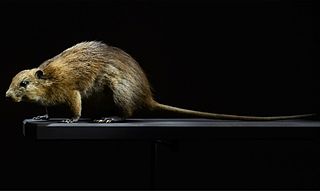 W
WMegalomys desmarestii, also known as the Martinique muskrat, Desmarest's pilorie, or the Martinique giant rice rat, is an extinct rice rat from Martinique in the Caribbean. It was among the largest species of West Indian rice rat, as big as a cat, and was one of the first Caribbean mammals to become extinct during the 20th century. It may have been aquatic, as it was known to escape into the sea when pursued by predators, but it never swam away from the island. It was common on Martinique until the end of the 19th century, when attempts were made to exterminate it because it was considered to be a pest in the island's coconut plantations. It was also hunted for food; however, due to a strong musky odor, cooking required people to singe off its hair, air out the body overnight and boil it in two batches of water. On 8 May 1902, the volcano Mount Pelée erupted, completely destroying the island's principal city of Saint-Pierre. It has been speculated that the rice rat became extinct then or during a later eruption in 1902, but predation by introduced mongooses is more likely to have been the primary cause of its extinction.
 W
WMegalomys luciae, also known as the Saint Lucia pilorie or Saint Lucia giant rice rat, as well as several variant spellings, is an extinct rodent that lived on the island of Saint Lucia in the eastern Caribbean. It was the size of a small cat, and it had a darker belly than Megalomys desmarestii, a closely related species from Martinique, and slender claws. The last known specimen died in the London Zoo in 1852, after three years of captivity. It probably became extinct in the latter half of the 19th century, with the last record dating from 1881. There is a stuffed specimen in the collection of the Natural History Museum in London.
 W
WNesomys narindaensis is an extinct rodent that lived in northwestern Madagascar. It is known from subfossil skull bones and isolated molars found in several sites during field work that started in 2001. First described in 2010, it is placed in the genus Nesomys together with three smaller living species, which may differ in some details of molar morphology. The presence of N. narindaensis, a rare element in the local rodent fauna, suggests that the region was previously more humid.
 W
WNoronhomys vespuccii, also known as Vespucci's rodent, is an extinct rat species from the islands of Fernando de Noronha off northeastern Brazil. Italian explorer Amerigo Vespucci may have seen it on a visit to Fernando de Noronha in 1503, but it subsequently became extinct, perhaps because of the exotic rats and mice introduced by the first explorers of the island. Numerous but fragmentary fossil remains of the animal, of uncertain but probably Holocene age, were discovered in 1973 and described in 1999.
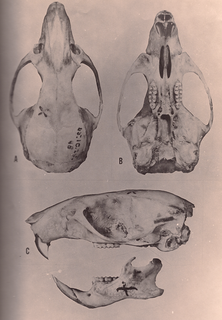 W
WOryzomys antillarum, also known as the Jamaican rice rat, is an extinct rodent of Jamaica. A member of the genus Oryzomys within the family Cricetidae, it is similar to O. couesi of mainland Central America, from where it may have dispersed to its island during the last glacial period. O. antillarum is common in subfossil cave faunas and is also known from three specimens collected live in the 19th century. Some historical records of Jamaican rats may pertain to it. The species probably became extinct late in the 19th century, perhaps due to the introduction of the small Asian mongoose, competition with introduced rodents such as the brown rat, and habitat destruction.
 W
WOryzomys nelsoni is an extinct rodent of María Madre Island, Nayarit, Mexico. Within the genus Oryzomys of the family Cricetidae, it may have been most closely related to the mainland species O. albiventer. Since its first description in 1898, most authors have regarded it as a distinct species, but it has also been classified as a mere subspecies of the marsh rice rat (O. palustris).
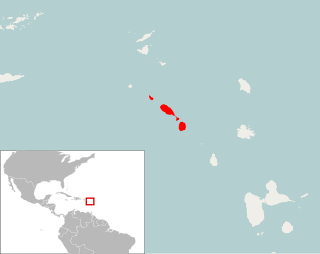 W
WPennatomys nivalis is an extinct oryzomyine rodent from the islands of Sint Eustatius, Saint Kitts, and Nevis in the Lesser Antilles. The only species in the genus Pennatomys, it is known from skeletal remains found in Amerindian archeological sites on all three islands, with dates ranging from 790–520 BCE to 900–1200 CE. No live specimens are known, but there are several historical records of rodents from Saint Kitts and Nevis that could conceivably refer to Pennatomys. The animal apparently belongs to a group within the tribe Oryzomyini that includes many other island-dwelling species.
 W
WRhagamys is an extinct genus of rodents in the subfamily Murinae, the Old World mice and rats. The genus was established by the Swiss zoologist Charles Immanuel Forsyth Major to accommodate Rhagamys orthodon, commonly known as Hensel's field mouse or the Tyrrhenian field rat, which is the only species in the genus. It was endemic to the Mediterranean islands of Corsica and Sardinia, where it first appeared in the fossil record in the Late Pleistocene, and was relatively large in size, weighing up to 50 g.
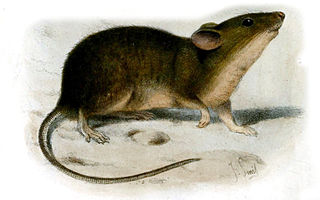 W
WThe St Kilda house mouse is an extinct subspecies of the house mouse found only on the islands of the St Kilda archipelago of northwest Scotland. They were first described, alongside the St Kilda field mouse, by natural historian Gerald Edwin Hamilton Barrett-Hamilton in 1899.
 W
WVerhoeven's giant tree rat is an extinct rat of subfamily Murinae that lived on Flores in Indonesia. It was judged to be extinct in 1996. However, experts believe that it died out before 1500 AD. The species is known only from several subfossil fragments. It was named after Dutch priest Theodor Verhoeven. A 1974 report of a recent specimen has been judged to represent P. armandvillei instead.
 W
WThe white-footed rabbit-rat is an extinct species of rodent, which was originally found in woodlands from Adelaide to Sydney, but became restricted to south-eastern Australia. It was kitten-sized and was one of Australia's largest native rodents. It was nocturnal and lived among trees. It made nests filled with leaves and possibly grass in the limbs of hollow eucalyptus trees. The mother carried her young attached to her teats. In a letter to John Gould, then Governor of South Australia Sir George Grey said that he removed a baby from a teat of its dead mother. The baby clung tightly to Gould's glove.